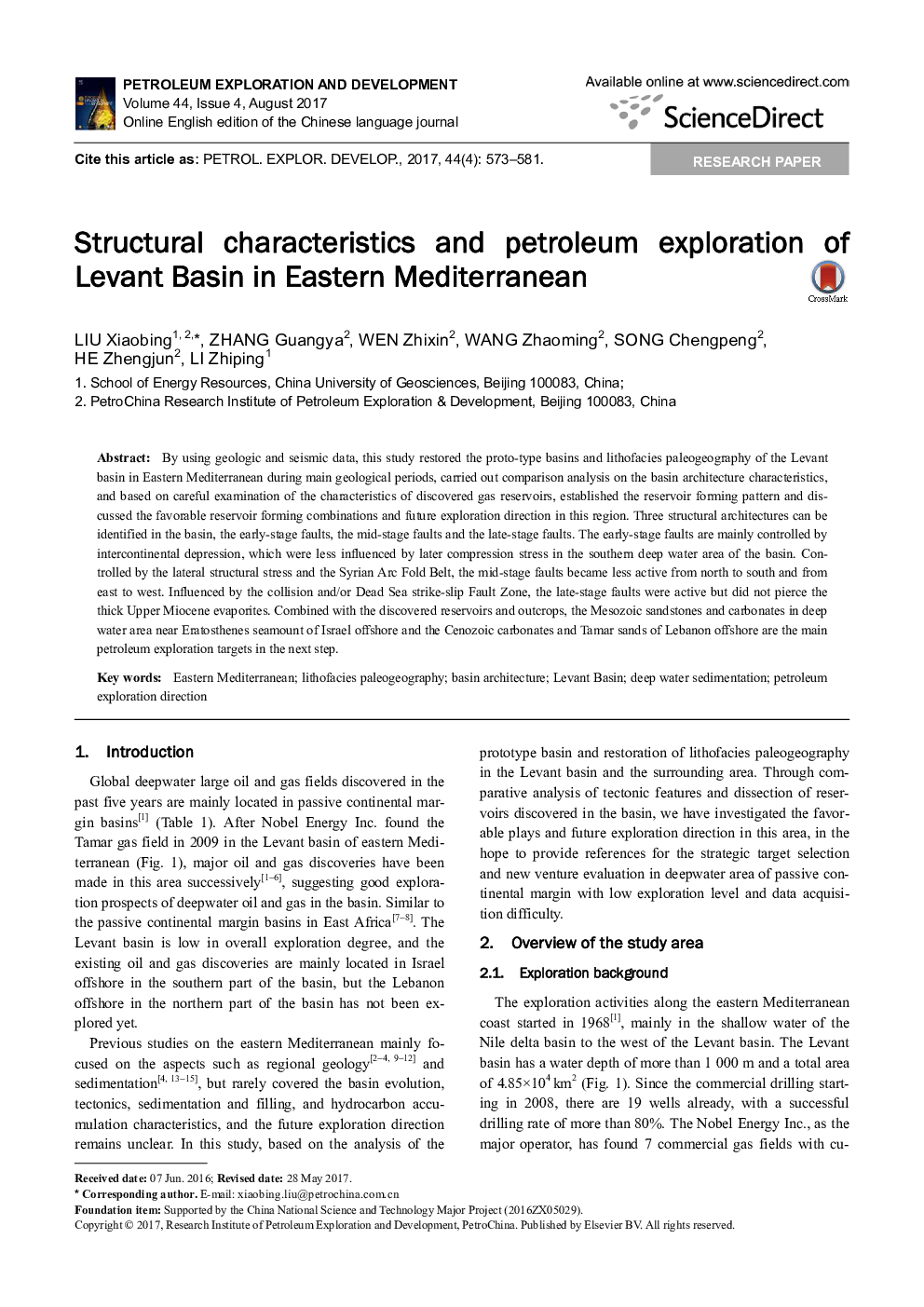| Article ID | Journal | Published Year | Pages | File Type |
|---|---|---|---|---|
| 8912237 | Petroleum Exploration and Development | 2017 | 9 Pages |
Abstract
By using geologic and seismic data, this study restored the proto-type basins and lithofacies paleogeography of the Levant basin in Eastern Mediterranean during main geological periods, carried out comparison analysis on the basin architecture characteristics, and based on careful examination of the characteristics of discovered gas reservoirs, established the reservoir forming pattern and discussed the favorable reservoir forming combinations and future exploration direction in this region. Three structural architectures can be identified in the basin, the early-stage faults, the mid-stage faults and the late-stage faults. The early-stage faults are mainly controlled by intercontinental depression, which were less influenced by later compression stress in the southern deep water area of the basin. Controlled by the lateral structural stress and the Syrian Arc Fold Belt, the mid-stage faults became less active from north to south and from east to west. Influenced by the collision and/or Dead Sea strike-slip Fault Zone, the late-stage faults were active but did not pierce the thick Upper Miocene evaporites. Combined with the discovered reservoirs and outcrops, the Mesozoic sandstones and carbonates in deep water area near Eratosthenes seamount of Israel offshore and the Cenozoic carbonates and Tamar sands of Lebanon offshore are the main petroleum exploration targets in the next step.
Related Topics
Physical Sciences and Engineering
Earth and Planetary Sciences
Geochemistry and Petrology
Authors
Xiaobing LIU, Guangya ZHANG, Zhixin WEN, Zhaoming WANG, Chengpeng SONG, Zhengjun HE, Zhiping LI,
